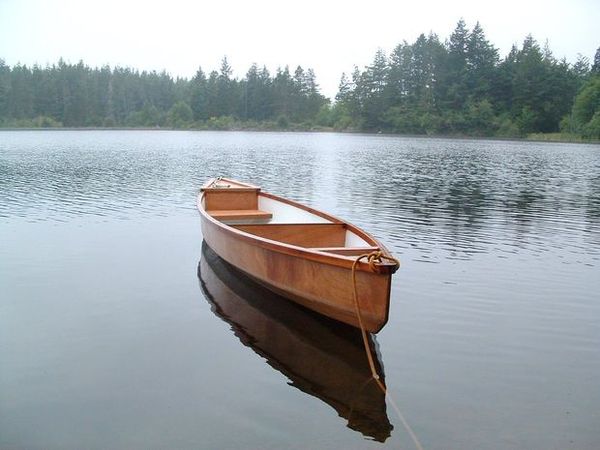
Building a Wooden Canoe for All-Weather Adventures
For those seeking a unique and rewarding experience, constructing a wooden canoe presents a fulfilling challenge that yields a timeless craft. Beyond the technical aspects, the process of building a canoe fosters a deep connection to the natural world and provides a sense of accomplishment unparalleled. This comprehensive guide explores the fundamentals of wooden canoe construction, covering design, materials, and the essential techniques needed to craft a vessel capable of enduring the rigors of all-weather adventures.
Choosing the Right Design
The first step in building a wooden canoe is to select a design that aligns with your intended use and desired characteristics. Numerous plans and blueprints are available, catering to various canoe styles and purposes. Factors to consider include:
Length and Beam
Length dictates the canoe's speed and stability. Longer canoes offer greater speed and glide but require more effort to paddle. Beam, or width, determines stability, with wider canoes offering better initial stability but potentially compromising maneuverability.
Hull Shape
The canoe's hull shape directly affects its performance. Round-bottomed hulls are generally more stable but less efficient in speed. Flat-bottomed hulls are faster but require more skill for balancing and paddling.
Material Choice
Traditional wooden canoes are often built from cedar, spruce, or oak. Cedar is lightweight, durable, and naturally resistant to rot. Spruce is also lightweight and strong, while oak provides exceptional durability and longevity.
Construction Style
Wooden canoes can be built using different methods. Strip construction involves layering thin strips of wood over a mold. Rib-and-plank construction uses ribs to form the frame and planks to create the outer hull.
Essential Materials and Tools
Building a wooden canoe requires a range of specialized materials and tools. These include:
Wood
Fasteners
Tools
Construction Process: A Step-by-Step Guide
The construction process can be broken down into distinct steps:
1. Mold Construction
If using strip construction, a mold is essential. The mold replicates the canoe's shape and serves as the base for building the hull. It can be made of plywood, foam, or even a combination of materials. Ensure the mold is robust and accurately represents the chosen design.
2. Cutting and Shaping Wood
Cut the wood strips or planks to the specified dimensions using a table saw or band saw. The wood should be perfectly straight and smooth. Once cut, use a hand plane to refine the edges and create a smooth, uniform surface. Use a router to shape the edges of the wood, creating curves and angles as required by the design.
3. Assembling the Hull
If using strip construction, attach the strips to the mold, overlapping them slightly to create a strong bond. Use epoxy resin and hardener to glue the strips together. For rib-and-plank construction, assemble the ribs and attach them to the keel and stems. Then, attach the planks to the ribs, overlapping them and securing them with screws or wooden dowels.
4. Finishing the Hull
Once the hull is assembled, it needs to be carefully sanded smooth to create a seamless surface. Use various grades of sandpaper, starting with coarser grits and progressing to finer grits for a smooth finish. This process eliminates imperfections and prepares the hull for waterproofing.
5. Waterproofing and Finishing
Apply multiple coats of epoxy resin to the inside and outside of the hull, ensuring thorough coverage. The epoxy acts as a waterproof barrier, protecting the wood from moisture damage and ensuring the canoe's longevity. After the epoxy has cured, apply a final finish, such as varnish or paint, to enhance the canoe's aesthetics and provide additional protection.
6. Building the Interior
Construct the thwarts (seats) and yoke using hardwood. Secure them to the hull using screws or wooden dowels. Attach any additional features, such as gunwale trim or flotation foam, to ensure a comfortable and functional interior.
Safety Considerations
Building a wooden canoe requires careful attention to safety. Always wear eye protection and a dust mask when working with wood. Use caution when operating power tools and follow all safety guidelines. Ensure proper ventilation when using epoxy resin, as it can be harmful if inhaled. Always test the canoe in calm water before venturing into more challenging conditions.
Final Touches and Maintenance
Once the canoe is complete, consider adding personalized touches like decorative wood trim, hand-painted designs, or brass hardware. Regular maintenance is crucial to preserve the beauty and longevity of your wooden canoe. This includes:
Conclusion
Building a wooden canoe is a challenging yet deeply rewarding endeavor. By following this comprehensive guide and exercising patience and attention to detail, you can craft a timeless vessel that will provide countless adventures for years to come. The process not only results in a beautiful and functional canoe but also fosters a profound connection to the natural world and a sense of accomplishment that few other endeavors can match. Remember, building a wooden canoe is a journey of skill, perseverance, and a deep appreciation for the art of traditional craftsmanship.






No comments:
Post a Comment
Note: Only a member of this blog may post a comment.